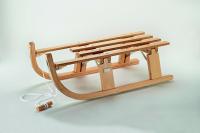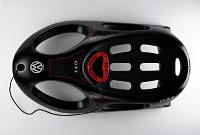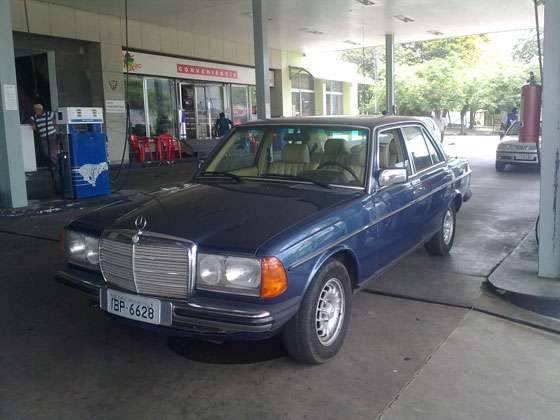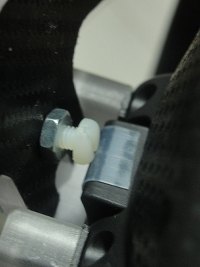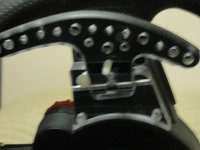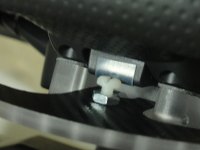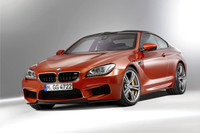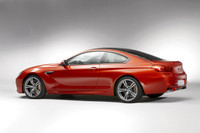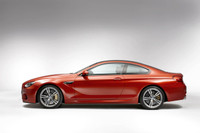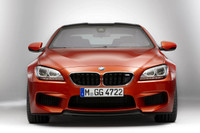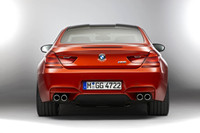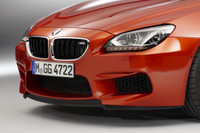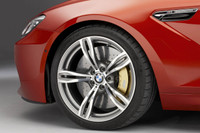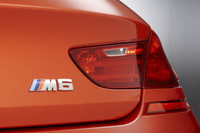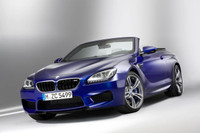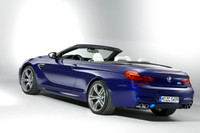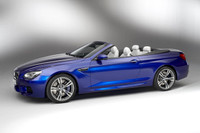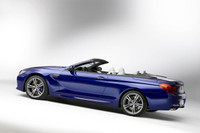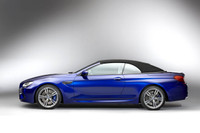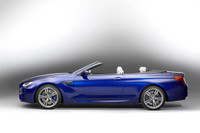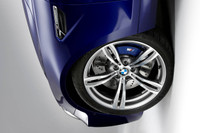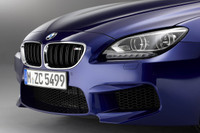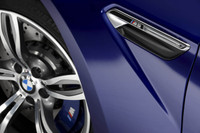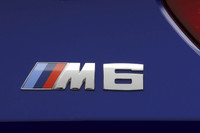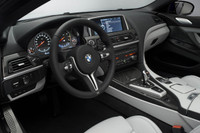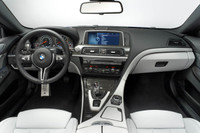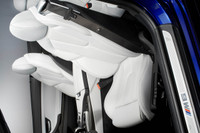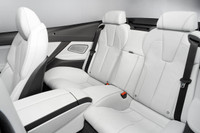Na última volta, acidente envolve 11 pilotos e o 12º vence a corrida
Tags:
Acidentes,
Automobilismo,
Daytona International Speedway,
James Buescher,
National Association for Stock Car Auto Racing (NASCAR)
Publicado: quarta-feira, 29 de fevereiro de 2012 às 20:48
Permalink:
Copiar
Link copiado para a área de transferência!
Houve um erro ao copiar o link para a área de transferência.
Cada vez aumenta mais a distância entre o Dodge Charger R/T e os outros automóveis.
Publicado: quarta-feira, 29 de fevereiro de 2012 às 17:18
Permalink:
Copiar
Link copiado para a área de transferência!
Houve um erro ao copiar o link para a área de transferência.
Audi R15 TDI - Circuit Paul Ricard - Romain Bernard - Onboard
Publicado: quarta-feira, 29 de fevereiro de 2012 às 12:30
Permalink:
Copiar
Link copiado para a área de transferência!
Houve um erro ao copiar o link para a área de transferência.
Angela Merkel tomando um banho de cerveja do garçom!
Tags:
Angela Dorothea Merkel,
Bebidas,
Humor,
Política
Publicado: quarta-feira, 29 de fevereiro de 2012 às 07:21
Permalink:
Copiar
Link copiado para a área de transferência!
Houve um erro ao copiar o link para a área de transferência.
Audi R18 TDI - Misano World Circuit - Romain Bernard - Onboard
Publicado: terça-feira, 28 de fevereiro de 2012 às 21:30
Permalink:
Copiar
Link copiado para a área de transferência!
Houve um erro ao copiar o link para a área de transferência.
2012 Daytona 500 Highlights
Start | Jimmie Johnson and others Multi Car Wreck
Jeff Gordon Engine Failure
Terry Labonte Spin
Crank It Up
Juan Pablo Montoya spins and wrecks track dryer! Huge fire!
Finish! Matt Kenseth wins!
Tags:
Automobilismo,
Daytona 500,
Daytona International Speedway,
National Association for Stock Car Auto Racing (NASCAR)
Publicado: terça-feira, 28 de fevereiro de 2012 às 17:19
Permalink:
Copiar
Link copiado para a área de transferência!
Houve um erro ao copiar o link para a área de transferência.
2012 BMW S 1000RR
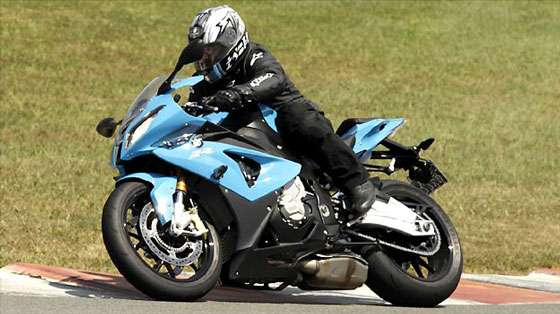
Internamente, as mudanças foram muitas para satisfazer ao mesmo tempo o piloto profissional e o de fim de semana, através da eletrônica e no fato de assumir múltiplas personalidades, com o maior controle possível em todas elas. O motor é de quatro cilindros em linha, com 999 cm³ de cilindrada, com injeção eletrônica e refrigeração líquida, e desenvolve 193 CV a 13.000 RPM e um torque de 11,45 kgfm a 9.750 RPM.
Para satisfazer tanto o piloto profissional como o de fim de semana, o mapeamento eletrônico do propulsor tem quatro possibilidades, que interagem com o controle de tração Dynamic Traction Control (DTC), que, por sua vez, atua de forma distinta para cada situação, por meio de um sensor de inclinação lateral que monitora a compatibilidade entre seu grau e a velocidade.
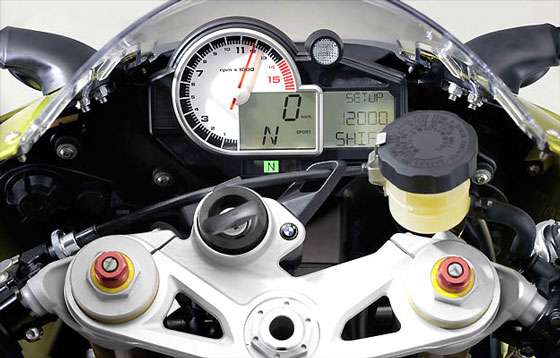
A BMW S 1000RR 2012 o shift assist, que permite trocar as marchas sem desacelerar nem acionar a embreagem. Um sensor percebe o movimento do pedal de marchas e corta o motor por centésimos, permitindo trocas mais rápidas, praticamente sem perda de rotações. No entanto, para reduzir marchas, o método convencional é exigido por razões de segurança. Empinar nas saídas de curvas também não é problema. Um outro sensor, que também pode ser desativado, limita a decolagem da roda dianteira em 20 graus, momento em que há o corte da injeção eletrônica, impedindo possíveis acidentes.
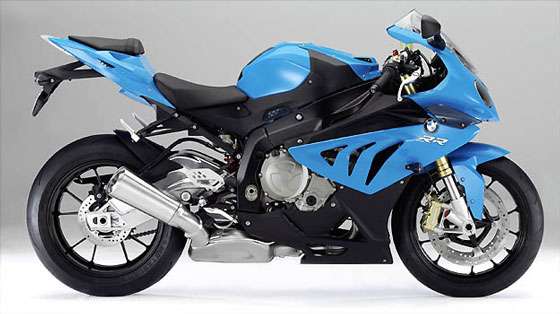
O quadro, em alumínio, também foi ajustado, com nova geometria da mesa de direção e distância entre-eixos, para melhorar o comportamento em retas. O freio dianteiro tem duplo disco de 320 mm, e o traseiro tem disco simples de 220 mm. O peso a seco é de 178 kg. A lista de opcionais inclui escape esportivo, punhos aquecidos e kit de competição. O preço sugerido é de R$ 69.900 para as cores azul, preta, branca e vermelha, e R$ 72.400 para a tricolor estilo de competição.
Tags:
BMW,
Motocicletas
Publicado: terça-feira, 28 de fevereiro de 2012 às 12:30
Permalink:
Copiar
Link copiado para a área de transferência!
Houve um erro ao copiar o link para a área de transferência.
Idiota grudando a língua no poste congelado!
Volvo Polestar S60 TTA Touring Car
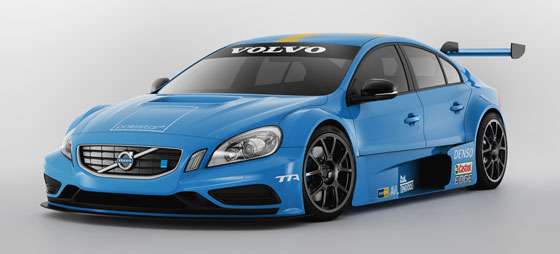
O Volvo Polestar S60 TTA Touring Car possui carroceria em fibra de carbono, um motor V6 que produz 420 CV de potência, um KERS semelhante ao utilizado na Fórmula 1, e uma transmissão sequencial de seis marchas. Embora a pintura ainda não tenha sido finalizada, será na mesma cor azul predominante no protótipo do C30 criado pela Polestar, cor semelhante aos Fórmula 1 da Renault com os quais Fernando Alonso conquistou seus dois títulos mundiais.
O carro entrará nas corridas com duas equipes: Volvo Polestar Racing e Volvo Polestar Performance. Somente três pilotos já foram confirmados até agora: Robert Dahlgren, Fredrik Ekblom e Thed Björk.
First picture of the new Volvo S60 TTA
Volvo announced in August last year that they are going to switch to TTA – the Swedish Racing Elite League ahead of 2012 and today the first picture is released of the new racing car.
"We have had a big pressure on us from many curious Volvo enthusiasts as it is a new championship and a new racing car. That is why we chosen to reveal the car now. Our final team colors are going to be shown later, but this is our S60 in TTA racing specification," said Alexander Murdzevski, Commercial Director of Volvo Motorsport Sweden.
Volvo is going to compete with four cars in the Racing Elite League with Polestar in two different teams, Volvo Polestar Racing and Volvo Polestar Performance. Three of four drivers are confirmed, Robert Dahlgren, Fredrik Ekblom and Thed Björk. The fourth driver has not yet been named.
"We can't go in to that today. We are negotiating with three drivers, but we have other things that are more time pressing. Polestar and TTA are conducting the final tests at the same time as we are working on the hybrid system, producing the carbon fibre body shells and calibrating the aerodynamics for all cars in our wind tunnel," said Derek Crabb, Director of Volvo Motorsport.
With three months remaining to the TTA premiere on the 12th of May at Karlskoga, a new future awaits Swedish motorsport with sporting values, tight races and completely new regulations with new and exciting technology. Volvo has supported the idea from the start and has contracted their participation in the championship until 2015 at least.
"Motorsport must be cool, exciting and fair. We must fight our meanest competitors in our best selling models. We must be able to win by doing the best job and it should be easy for importers in the country to change racing car when changing model without the need of a heavy factory programme. We are really looking forward to the TTA – Racing Elite League 2012," said Anders Gustafsson, Managing Director of Volvo Cars Sweden.
Calendar – TTA Racing Elite League
12/05 – Karlskoga
02/06 – Anderstorp
16/06 – Gothenburg
07/07 – Falkenberg
18/08 – Karlskoga
01/09 – Anderstorp
15/09 – Tierp Arena
29/09 – Gothenburg
Technical specification – Volvo S60 TTA
Length: 470 mm
Width: 1970 mm
Height: 1205 mm
Wheelbase: 2750 mm
Track width: 1660 mm front/1630 mm rear
Suspension: Double wishbone, three-way dampers, etc.
Body: Carbon fibre
Engine: V6 with hybrid system
Drive: RWD
Power: 420 BHP
Gearbox: 6-speed sequential with paddles on steering wheel
Hybrid system: Kinetic Energy Recovery System (KERS)
Rear wing: 1600 mm width/300 mm depth
Brakes: Front: 4-piston calipers, 370 mm ventilated discs
Rear: 4-piston calipers, 360 mm ventilated discs
Rims: 18″ with centre wheel nut
Tyres: Front: 260/660-18 Rear: 280/660-18
Tags:
Automobilismo,
Carros,
KERS (Kinetic Energy Recovery System),
Polestar,
Swedish Touring Car Championship,
TTA Racing Elite League,
Volvo,
World Touring Car Championship (WTCC)
Publicado: segunda-feira, 27 de fevereiro de 2012 às 21:27
Permalink:
Copiar
Link copiado para a área de transferência!
Houve um erro ao copiar o link para a área de transferência.
FOURTWENTYSEVEN!!! Shelby Cobra 427.
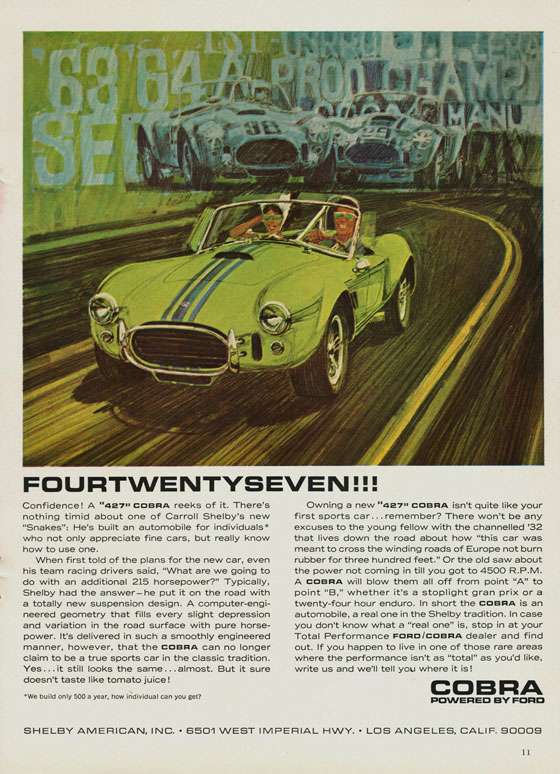
Tags:
Carros,
Propagandas de Carros,
Publicidade,
Shelby
Publicado: segunda-feira, 27 de fevereiro de 2012 às 17:02
Permalink:
Copiar
Link copiado para a área de transferência!
Houve um erro ao copiar o link para a área de transferência.
Fifth Gear: Renault Sport Mégane 265 Trophy vs. Nissan 370Z
Tags:
Carros,
Channel Five,
Fifth Gear,
Mark Higgins,
Nissan,
Renault,
Televisão,
Timothy 'Tiff' Needell
Publicado: segunda-feira, 27 de fevereiro de 2012 às 12:24
Permalink:
Copiar
Link copiado para a área de transferência!
Houve um erro ao copiar o link para a área de transferência.
Uma imagem
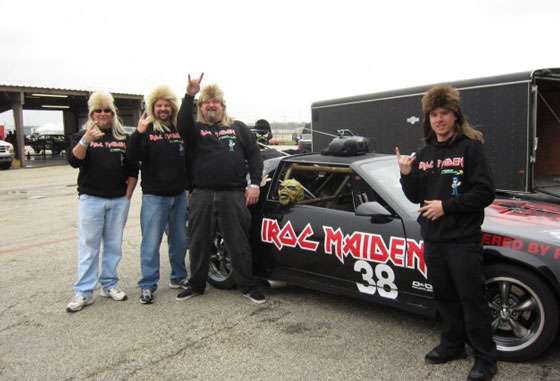
Run To The Mills!
Publicado: segunda-feira, 27 de fevereiro de 2012 às 07:30
Permalink:
Copiar
Link copiado para a área de transferência!
Houve um erro ao copiar o link para a área de transferência.
DW12 IndyCar - Phoenix International Raceway - JR Hildebrand - Onboard
Tags:
Automobilismo,
IndyCar Series,
John Randal Hildebrand Jr.,
Onboard,
Phoenix International Raceway
Publicado: domingo, 26 de fevereiro de 2012 às 21:30
Permalink:
Copiar
Link copiado para a área de transferência!
Houve um erro ao copiar o link para a área de transferência.
Alpina. Performance without all the performance.
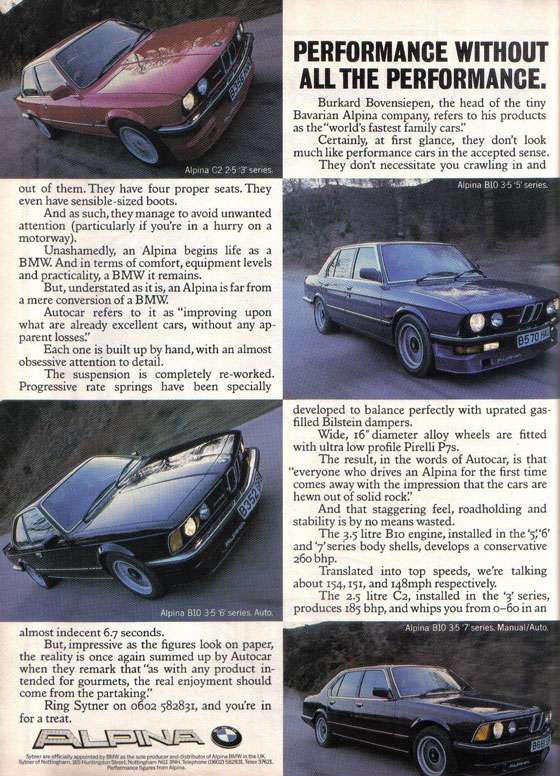
Tags:
Alpina,
BMW,
Carros,
Propagandas de Carros,
Publicidade
Publicado: domingo, 26 de fevereiro de 2012 às 17:13
Permalink:
Copiar
Link copiado para a área de transferência!
Houve um erro ao copiar o link para a área de transferência.
Leyton House CG901B Start Up Procedure
Publicado: domingo, 26 de fevereiro de 2012 às 12:30
Permalink:
Copiar
Link copiado para a área de transferência!
Houve um erro ao copiar o link para a área de transferência.
GTI Sledding Bob by Volkswagen Accessories
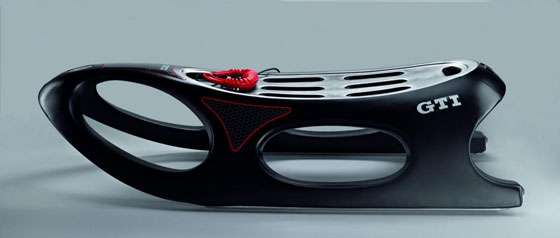
O sled está disponível no endereço www.volkswagen-zubehoer.de/shop, ao preço de 50 euros, para a versão em madeira, e 64,90 euros para a versão em plástico.
Tags:
Carros,
Volkswagen
Publicado: domingo, 26 de fevereiro de 2012 às 07:30
Permalink:
Copiar
Link copiado para a área de transferência!
Houve um erro ao copiar o link para a área de transferência.
A Salute To Those Who Race: 2011 Formula 1 season review by Eddie Jordan
Publicado: sábado, 25 de fevereiro de 2012 às 22:14
Permalink:
Copiar
Link copiado para a área de transferência!
Houve um erro ao copiar o link para a área de transferência.
Volkswagen Fuscão 1500. Todo mundo tem a mesma idade.
Publicado: sábado, 25 de fevereiro de 2012 às 17:30
Permalink:
Copiar
Link copiado para a área de transferência!
Houve um erro ao copiar o link para a área de transferência.
Mercedes-Benz 300D
Fazia tempo que via esse carro em Santa Cruz do Sul, mas nunca conseguia vê-lo parado, até que, um dia, ele teve que parar para abastecer, e exatamente na hora do almoço, quando estava na rua.
Tags:
Carros,
Mercedes-Benz,
Velharias Inteiraças
Publicado: sábado, 25 de fevereiro de 2012 às 07:30
Permalink:
Copiar
Link copiado para a área de transferência!
Houve um erro ao copiar o link para a área de transferência.
Danica Patrick: "o que eu teria feito diferente"
 A revista Car And Driver entrevistou Danica Sue Patrick, a terceira atleta mulher mais famosa dos Estados Unidos, que recentemente deixou a IndyCar Series para se dedicar à NASCAR.
A revista Car And Driver entrevistou Danica Sue Patrick, a terceira atleta mulher mais famosa dos Estados Unidos, que recentemente deixou a IndyCar Series para se dedicar à NASCAR.Você é patrocinada pela GoDaddy, mas está trabalhando muito a favor da COPD, entidade que cuida de pessoas que possuem obstrução pulmonar crônica, que tem o site Drive4COPD.com.
Minha avó morreu com dessa doença. Ela ficava em uma cadeira de rodas, recebendo oxigênio puro 24 horas por dia. Ela esforçava-se muito apenas para respirar. Essa doença mata mais pessoas do que o câncer de mama e o diabetes. É uma coisa tão triste, e tentar ajudar é uma forma de honrá-la e talvez fazer algum bem.
Tags:
Automobilismo,
Danica Sue Patrick,
IndyCar Series,
National Association for Stock Car Auto Racing (NASCAR),
O que eu teria feito diferente
Publicado: sexta-feira, 24 de fevereiro de 2012 às 21:30
Permalink:
Copiar
Link copiado para a área de transferência!
Houve um erro ao copiar o link para a área de transferência.
MIG Bank. Confidence is capital... but watch out for the bears!
Tags:
Automobilismo,
Bancos,
Brawn GP,
Fórmula 1,
Intervalo Comercial,
Jenson Alexander Lyons Button,
MIG Bank,
Propagandas com Pilotos,
Propagandas de Bancos,
Publicidade
Publicado: sexta-feira, 24 de fevereiro de 2012 às 17:30
Permalink:
Copiar
Link copiado para a área de transferência!
Houve um erro ao copiar o link para a área de transferência.
Biography Channel: Roberto Gómez Bolaños
A partir de Chespirito nascem dois personagens, Chapolin Colorado e Chaves, muito conhecido na América Latina. Também é criador de vários outros personagens, como Chompiras e Doutor Chapatin. Protagonizou ainda filmes mexicanos, escritos por ele mesmo.
Tags:
Biography Channel,
Chapolin,
Chaves,
Chespirito,
Documentários,
Humor,
Roberto Gómez Bolaños,
Séries,
Televisa,
Televisão
Publicado: sexta-feira, 24 de fevereiro de 2012 às 12:30
Permalink:
Copiar
Link copiado para a área de transferência!
Houve um erro ao copiar o link para a área de transferência.
Fusca Seis Rodas
Tags:
Carros,
Humor,
Volkswagen
Publicado: sexta-feira, 24 de fevereiro de 2012 às 07:30
Permalink:
Copiar
Link copiado para a área de transferência!
Houve um erro ao copiar o link para a área de transferência.
Abarth 695 Tributo Maserati
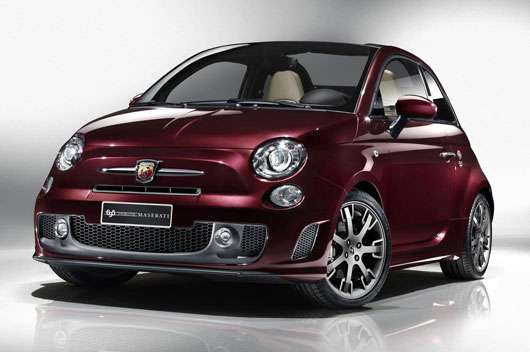

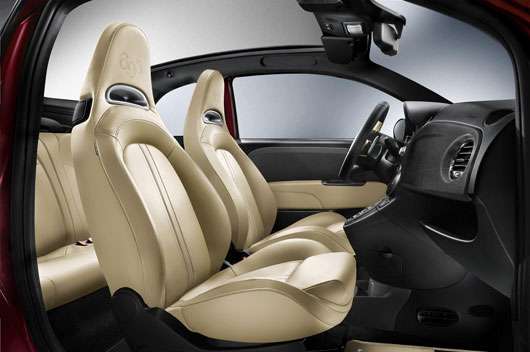
Publicado: quinta-feira, 23 de fevereiro de 2012 às 21:30
Permalink:
Copiar
Link copiado para a área de transferência!
Houve um erro ao copiar o link para a área de transferência.
Keep Walking. Johhnie Walker. (With Jenson Button)
Tags:
Automobilismo,
Bebidas,
Fórmula 1,
Intervalo Comercial,
Jenson Alexander Lyons Button,
Johnnie Walker,
McLaren,
Propagandas com Pilotos,
Propagandas de Bebidas,
Publicidade
Publicado: quinta-feira, 23 de fevereiro de 2012 às 17:05
Permalink:
Copiar
Link copiado para a área de transferência!
Houve um erro ao copiar o link para a área de transferência.
Porsche 911 GT2 RS vs. Nissan GT-R
Ford Escort XR3. Emoção em todos os sentidos. (Com Ayrton Senna)
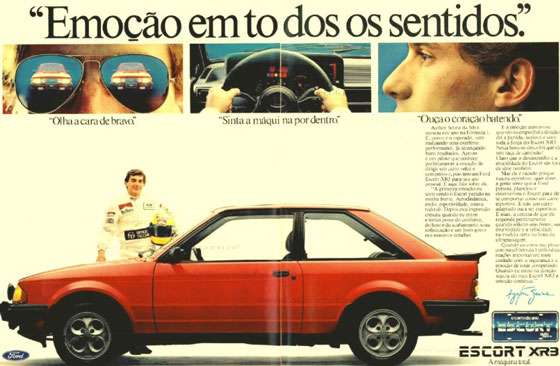
Tags:
Automobilismo,
Ayrton Senna da Silva,
Carros,
Ford,
Fórmula 1,
Propagandas com Pilotos,
Propagandas de Carros,
Publicidade
Publicado: quarta-feira, 22 de fevereiro de 2012 às 17:30
Permalink:
Copiar
Link copiado para a área de transferência!
Houve um erro ao copiar o link para a área de transferência.
O processo de venda de serviços de um consultor de "matemarketing" digital
Título estranho este, não?
O que é matemarketing? Atualmente o marketing é baseado em métricas, relatórios e ROI. O marketing acaba sendo feito em uma bela planilha de Excel. Como diria um engenheiro, "layout bonito é planilha".
Um consultor de marketing digital ou "consultor de matemarketing digital", deve ter em mente que o que vai de fato vender seus serviços será a capacidade que tem de prever resultados, gerá-los, mensurá-los e apresentá-los ao cliente. Vamos analisar a primeira dessas etapas: prever resultados.
A venda de serviços de marketing digital, seja consultoria ou execução, nunca é uma tarefa fácil, principalmente porque muitos clientes não entendem exatamente o que o consultor está vendendo. Um cliente inseguro não é um cliente comprador. A parte mais importante do processo de venda, e que por si só já pode gerar a venda, é a previsão realista do resultado.
Um bom uso da "ferramenta de palavras-chave" e do "estimador de tráfego", ambas do Google, ajudará a montar uma planilha estimando a quantidade de buscas de cada palavra, o CPC de cada uma, no caso de estimar uma campanha de AdWords, e outras informações para você estimar o tráfego para o site do seu cliente.
Uma boa noção de quanto o site receberá de tráfego fará com que o cliente faça uma conta simples, que você o ajudará. Essa conta é a do retorno sobre o investimento dele. Ela é fundamental para que a venda de serviços aconteça.
Um exemplo com números fictícios para ajudá-lo a entender a linha de raciocínio:
- Digamos que, somando-se a quantidade de buscas das principais 100 palavras-chave, teremos 100.000 buscas mensais no Google por tais palavras. Esse dado você obtém na ferramenta de palavras-chave.
- Em um bom posicionamento de SEO, entre a posição um e quatro, a conversão em cliques será de cerca de 20%. Se você tiver uma campanha de AdWords, pode obter um CTR (número de cliques dividido pelo número de impressões do anúncio) de 10%, se tiver um bom índice de qualidade, pagando um valor baixo por clique. Para o nosso exemplo, vamos trabalhar com os 10% de cliques da campanha de AdWords.
- Digamos que o CPC (custo por clique) médio seja de R$ 0,40. Saiba que, para obter um valor médio como esse, você deverá trabalhar na "cauda longa", ou seja, comprar muitas palavras com poucas buscas e que tenham um CPC bem baixo. A quantidade de visitas que terá no site será de 10.000 (10% de 100.000) e isso custará para a empresa R$ 4.000 (10.000 vezes R$0,40).
- Digamos que a taxa de conversão em leads, ou seja, contatos vindos do site, do site seja de 40%. Para uma empresa de serviços, como uma agência de propaganda ou uma assessoria de imprensa, a missão crítica, o objetivo do seu site são pedidos de orçamento. Ou seja, 40% das dez mil visitas (cliques) se transformam em pedidos de orçamento, o que nos traz 4.000 contatos, também chamados de leads ou prospects.
- Digamos que a empresa tenha uma taxa de conversão de 10% de leads em contratos, a empresa terá 400 clientes no mês.
- Se o preço do produto ou serviço vendido for de R$100, o faturamento será de R$40.000 (400 clientes vezes R$ 100). Como o custo da campanha foi de R$ 4.000, e o faturamento foi de R$ 40.000, teremos um retorno de 10 x 1, ou seja, R$ 10 de faturamento para cada R$ 1 investido em AdWords.
Se o serviço ou produto vendido tiver uma margem de 40%, o cliente terá lucro bruto de 40% sobre os R$ 40.000, ou seja, R$16.000. Descontando o custo da campanha, o lucro final será de R$12.000.
Essa projeção de lucro é que venderá o seu serviço ao cliente. Faça-o ver que seu serviço representa lucro no final do mês, e não um gasto desnecessário só porque o concorrente tem um.
Conrado Adolpho
O que é matemarketing? Atualmente o marketing é baseado em métricas, relatórios e ROI. O marketing acaba sendo feito em uma bela planilha de Excel. Como diria um engenheiro, "layout bonito é planilha".
Um consultor de marketing digital ou "consultor de matemarketing digital", deve ter em mente que o que vai de fato vender seus serviços será a capacidade que tem de prever resultados, gerá-los, mensurá-los e apresentá-los ao cliente. Vamos analisar a primeira dessas etapas: prever resultados.
A venda de serviços de marketing digital, seja consultoria ou execução, nunca é uma tarefa fácil, principalmente porque muitos clientes não entendem exatamente o que o consultor está vendendo. Um cliente inseguro não é um cliente comprador. A parte mais importante do processo de venda, e que por si só já pode gerar a venda, é a previsão realista do resultado.
Um bom uso da "ferramenta de palavras-chave" e do "estimador de tráfego", ambas do Google, ajudará a montar uma planilha estimando a quantidade de buscas de cada palavra, o CPC de cada uma, no caso de estimar uma campanha de AdWords, e outras informações para você estimar o tráfego para o site do seu cliente.
Uma boa noção de quanto o site receberá de tráfego fará com que o cliente faça uma conta simples, que você o ajudará. Essa conta é a do retorno sobre o investimento dele. Ela é fundamental para que a venda de serviços aconteça.
Um exemplo com números fictícios para ajudá-lo a entender a linha de raciocínio:
- Digamos que, somando-se a quantidade de buscas das principais 100 palavras-chave, teremos 100.000 buscas mensais no Google por tais palavras. Esse dado você obtém na ferramenta de palavras-chave.
- Em um bom posicionamento de SEO, entre a posição um e quatro, a conversão em cliques será de cerca de 20%. Se você tiver uma campanha de AdWords, pode obter um CTR (número de cliques dividido pelo número de impressões do anúncio) de 10%, se tiver um bom índice de qualidade, pagando um valor baixo por clique. Para o nosso exemplo, vamos trabalhar com os 10% de cliques da campanha de AdWords.
- Digamos que o CPC (custo por clique) médio seja de R$ 0,40. Saiba que, para obter um valor médio como esse, você deverá trabalhar na "cauda longa", ou seja, comprar muitas palavras com poucas buscas e que tenham um CPC bem baixo. A quantidade de visitas que terá no site será de 10.000 (10% de 100.000) e isso custará para a empresa R$ 4.000 (10.000 vezes R$0,40).
- Digamos que a taxa de conversão em leads, ou seja, contatos vindos do site, do site seja de 40%. Para uma empresa de serviços, como uma agência de propaganda ou uma assessoria de imprensa, a missão crítica, o objetivo do seu site são pedidos de orçamento. Ou seja, 40% das dez mil visitas (cliques) se transformam em pedidos de orçamento, o que nos traz 4.000 contatos, também chamados de leads ou prospects.
- Digamos que a empresa tenha uma taxa de conversão de 10% de leads em contratos, a empresa terá 400 clientes no mês.
- Se o preço do produto ou serviço vendido for de R$100, o faturamento será de R$40.000 (400 clientes vezes R$ 100). Como o custo da campanha foi de R$ 4.000, e o faturamento foi de R$ 40.000, teremos um retorno de 10 x 1, ou seja, R$ 10 de faturamento para cada R$ 1 investido em AdWords.
Se o serviço ou produto vendido tiver uma margem de 40%, o cliente terá lucro bruto de 40% sobre os R$ 40.000, ou seja, R$16.000. Descontando o custo da campanha, o lucro final será de R$12.000.
Essa projeção de lucro é que venderá o seu serviço ao cliente. Faça-o ver que seu serviço representa lucro no final do mês, e não um gasto desnecessário só porque o concorrente tem um.
Conrado Adolpho
Tags:
Google,
Google AdWords,
Internet,
Marketing,
Marketing Digital,
Publicidade,
Search Engine Optimization (SEO)
Publicado: quarta-feira, 22 de fevereiro de 2012 às 12:23
Permalink:
Copiar
Link copiado para a área de transferência!
Houve um erro ao copiar o link para a área de transferência.
2012 Smart Fortwo
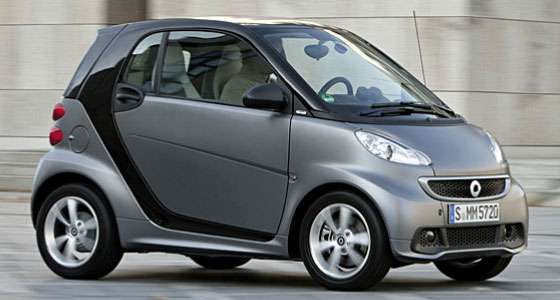
Outra mudança interessante são as seções do para-choques frontal, que se integram num formato orgânico, parecido com o dos carros de Hyundai e Kia. Nas laterais e atrás, é difícil notar mudanças, as saias e o para-choques foram alterados. Já o interior ganhou novas opções de acabamento.
Entre as opções de motores, as opções continuam as mesmas da atual geração: gasolina de 61 e 71 CV, gasolina turbo de 84 CV e 102 CV, e Turbodiesel CDI de 54 CV de potência. Na Europa, o Fortwo reestilizado estreia em abril a partir de 10.275 Euros. No Brasil, o modelo desembarca no meio do ano.
Publicado: quarta-feira, 22 de fevereiro de 2012 às 07:30
Permalink:
Copiar
Link copiado para a área de transferência!
Houve um erro ao copiar o link para a área de transferência.
Chevrolet Omega Suprema. Para você, que quer mais.
Publicado: terça-feira, 21 de fevereiro de 2012 às 17:30
Permalink:
Copiar
Link copiado para a área de transferência!
Houve um erro ao copiar o link para a área de transferência.
Pedestre Fantasma
Uma campanha da Shell da Ucrânia, chamada "Pedestrian Ghost", consistia no seguinte: o carro se aproxima em velocidade acima do permitido, e um sistema, composto por um compressor de hélio, ativado por radar, infla um balão plástico em forma humana, dando o maior susto que um motorista em alta velocidade pode levar na calada da noite. Depois de cheio o balão subia para o céu, fazendo uma analogia à alma de um pedestre atropelado.
Tags:
Carros,
Publicidade,
Shell
Publicado: terça-feira, 21 de fevereiro de 2012 às 12:30
Permalink:
Copiar
Link copiado para a área de transferência!
Houve um erro ao copiar o link para a área de transferência.
RIDE24: 24 Horas de Ciclismo
A competição, que será operada sob o regulamento técnico do ciclismo inglês, poderá ser disputado em grupos de quatro ciclistas ou individualmente, e a equipe que contonar mais vezes os 3.862 metros do circuito de Goodwood terá vaga garantida nas 24 Heures Velo, no Circuit Bugatti, em Le Mans. A disputa terá premiações separadas para as equipes femininas, de veteranos e mistas. Aos ciclistas que disputarem sozinhos, uma vaga para o Race Across America estará disponível.
“Esta competição é o supra-sumo das competições ciclísticas, e o único evento deste tipo na Inglaterra, com as equipes correndo dia e noite ao redor do famoso circuito de Goodwood. É sua chance de atingir o seu limite, em uma inesquecível experiência, e por uma boa causa. Queremos que o evento deste ano seja maior, melhor e mais competitivo que nunca, por tanto, junte-se a nós”, disse a orgazinzadora do evento, Sarah Stevenson, do Action Medical Research.
Várias opções de ingresso à RIDE24 estão disponíveis. Se você faz parte de uma equipe de captação de recursos, você pode pagar 240 libras esterlinas por equipe e comprometer-se a levantar 1.300 libras esterlinas de patrocínio. Sem captação de recursos, sua equipe deve pagar 1.000 libras esterlinas, sem patrocínios. Ciclistas individuais pagam 60 libras esterlinas (mais 325 de patrocínio) ou 250 libras esterlinas (sem patrocínio). Todos os competidores podem usufruir da aldeia RIDE24, que inclui instalações de camping, lanches quentes e frios, uma área de massagens, primeiros socorros e apoio mecânico.
Tags:
Ciclismo,
Goodwood Motor Circuit,
RIDE24
Publicado: terça-feira, 21 de fevereiro de 2012 às 07:30
Permalink:
Copiar
Link copiado para a área de transferência!
Houve um erro ao copiar o link para a área de transferência.
Keep the party going. Mercedes-Benz E-Class. Celebrating over 50 years of safety innovations from Mercedes-Benz.
Publicado: segunda-feira, 20 de fevereiro de 2012 às 17:30
Permalink:
Copiar
Link copiado para a área de transferência!
Houve um erro ao copiar o link para a área de transferência.
GranTurgismo Dynamic Paddle Shifters for Logitech Driving Force GT
É um acessório feito com plástico e que não invalida a garantia do seu Logitech Driving Force GT, pois possui adesivos para fixá-lo na parte traseira do volante, ao invés de usar parafusos, o que faria com que tivéssemos que fazer furos para prendê-los. Ele é fácil de ser instalado, pois o pacote, além do par de borboletas e dois adesivos semi-transparentes, vem com um pano umedecido com álcool, do mesmo tipo que serve para limpar lentes de contato.
Você limpa a parte de trás do volante, onde ficam os botões para troca de marchas, com esse pano, para limpar marcas de dedo e outros sinais de oleosidade da pele que ficaram impregnados nos locais. Quando estiverem secos (um a dois minutos depois), coloque os dois adesivos pequenos no volante, um em cada botão, na parte externa, onde se pressiona com o dedo para acioná-lo. Após, retire os protetores dos adesivos de cada borboleta, encaixe-a no volante e pressione contra a estrutura do volante ao redor do botão de troca de marchas, de maneira uniforme, com os dedos das duas mãos, por cerca de um minuto, para fixá-la bem.
Depois, regule com os dois parafusos a distância da borboleta ao volante e o curso de acionamento, de forma que fique o mais distante possível, para evitar que atrapalhe seus dedos quando segurar firme o volante em retas, e de forma que o parafuso central consiga acionar o botão, mesmo que não fique bem atrás dele, ou quase do lado, perto de escapar dele. A instalação está pronta.
Os GranTurgismo Dynamic Paddle Shifters para o Logitech Driving Force GT funcionam muito bem, mas os parafusos que acionam os botões originais do volante não ficam exatamente atrás deles, mas quase do lado. Por isso, tive que regular a distância dos paddle shifters para que ficassem muito próximos do volante, o que atrapalha um pouco dos dedos quando se segura firmemente o volante em retas. Além disso, bem que o acabamento em material imitando fibra de carbono poderia se estender à parte de trás dos shift paddles.
É um grande produto, um perfeito adendo ao Logitech Driving Force GT.
Clique nos links abaixo para ver mais vídeos e fotos do produto.
http://www.youtube.com/watch?v=UOFk6apkfJk
http://www.youtube.com/watch?v=mu_7Ihq9iuA
http://www.granturgismo.com/productspads1.html
http://www.facebook.com/pages/Granturgismo/120753854672363
Tags:
Gran Turismo,
GranTurgismo,
Hardware,
Informática,
Logitech,
PlayStation,
Polyphony Digital,
Racing Simulators,
Sony
Publicado: segunda-feira, 20 de fevereiro de 2012 às 12:30
Permalink:
Copiar
Link copiado para a área de transferência!
Houve um erro ao copiar o link para a área de transferência.
Lamborghini Aventador LP 700-4 Hockenheimring Lap Test & 370 km/h
Publicado: segunda-feira, 20 de fevereiro de 2012 às 07:30
Permalink:
Copiar
Link copiado para a área de transferência!
Houve um erro ao copiar o link para a área de transferência.
Linha Volkswagen 1993. Você conhece, você confia.
Publicado: domingo, 19 de fevereiro de 2012 às 17:30
Permalink:
Copiar
Link copiado para a área de transferência!
Houve um erro ao copiar o link para a área de transferência.
2011 GT Academy: Road to Dubai
Tags:
24 Hours Of Dubai,
Automobilismo,
Documentários,
Eurosport,
Gran Turismo,
GT Academy,
Jann Mardenborough,
Jordan Tresson,
Lucas Ordóñez Martín-Esperanza,
PlayStation,
Polyphony Digital,
Racing Simulators,
Sony,
Televisão
Publicado: domingo, 19 de fevereiro de 2012 às 12:30
Permalink:
Copiar
Link copiado para a área de transferência!
Houve um erro ao copiar o link para a área de transferência.
Mercedes AMG F1 W03 - First Onboard Video - Nico Rosberg - Silverstone Circuit
Publicado: sábado, 18 de fevereiro de 2012 às 20:43
Permalink:
Copiar
Link copiado para a área de transferência!
Houve um erro ao copiar o link para a área de transferência.
Volkswagen Gol. O carro dos novos tempos.
Publicado: sábado, 18 de fevereiro de 2012 às 17:12
Permalink:
Copiar
Link copiado para a área de transferência!
Houve um erro ao copiar o link para a área de transferência.
Top Gear: Citroën DS3 Racing vs. Renault Clio Sport vs. Fiat 500C Abarth
No desafio que escolheria qual seria o melhor entre os três hatchbacks, Jeremy Clarkson, James May e Richard Hammond circularam pelas estreitas ruas de Lucca, na Itália, e disputaram uma pequena corrida, em nada menos que o Circuit de la Principauté de Monaco, em pleno final de semana de Grande Prêmio de Fórmula 1, levando na carona ninguém menos que Bernie Ecclestone, Flavio Briatore e Christian Horner.
Tags:
Abarth,
Automobilismo,
British Broadcasting Corporation (BBC),
Carros,
Citroën,
Fiat,
Fórmula 1,
James Daniel May,
Jeremy Charles Robert Clarkson,
Renault,
Richard Mark Hammond,
Televisão,
Top Gear,
Top Gear UK
Publicado: sábado, 18 de fevereiro de 2012 às 12:24
Permalink:
Copiar
Link copiado para a área de transferência!
Houve um erro ao copiar o link para a área de transferência.
Pago para engravidar mulher, amigo do marido falha depois de 72 tentativas
Um caso em Stuttgart, Alemanha, chamou a atenção. Traute Soupolos, campeã de concurso de beleza, queria ter um filho, mas seu marido, Demetrius, é estéril. Ao invés de realizar uma inseminação artificial, "contratou" seu vizinho, Frank Maus, para engravidar sua mulher, mediante o pagamento de 2.500 dólares.
Como se não bastasse, Frank também é casado e tem dois filhos. Mesmo com todos os percalços, Frank tentou durante seis meses, três vezes por semana, mas sem sucesso, depois de 72 relações sexuais. Quando sua mulher descobriu, Maus disse: "não gosto de fazer isso tanto quanto gosto de você, estou fazendo isso apenas pelo dinheiro, tente entender".
Demetrius achou muito estranho o fato de Traute não engravidar, e orientou Frank para fazer exames. O médico que o examinou disse que Maus também é estéril. Ele chegou até sua casa e contou a notícia à sua esposa. O que não era de se esperar é que a mulher não ficou surpresa. Embasbacado com a situação, Frank pediu satisfações a ela, que foi obrigada a dizer que ele não é o pai de seus dois filhos.
Agora, Soupolos está processando Maus por "quebra de contrato", e exige o dinheiro de volta, mas Frank recusa, alegando que não disse que garantiria que Traute engravidaria, mas que foi "honesto" a ponto de tentar.
Como se não bastasse, Frank também é casado e tem dois filhos. Mesmo com todos os percalços, Frank tentou durante seis meses, três vezes por semana, mas sem sucesso, depois de 72 relações sexuais. Quando sua mulher descobriu, Maus disse: "não gosto de fazer isso tanto quanto gosto de você, estou fazendo isso apenas pelo dinheiro, tente entender".
Demetrius achou muito estranho o fato de Traute não engravidar, e orientou Frank para fazer exames. O médico que o examinou disse que Maus também é estéril. Ele chegou até sua casa e contou a notícia à sua esposa. O que não era de se esperar é que a mulher não ficou surpresa. Embasbacado com a situação, Frank pediu satisfações a ela, que foi obrigada a dizer que ele não é o pai de seus dois filhos.
Agora, Soupolos está processando Maus por "quebra de contrato", e exige o dinheiro de volta, mas Frank recusa, alegando que não disse que garantiria que Traute engravidaria, mas que foi "honesto" a ponto de tentar.
Publicado: sábado, 18 de fevereiro de 2012 às 07:30
Permalink:
Copiar
Link copiado para a área de transferência!
Houve um erro ao copiar o link para a área de transferência.
Richard Hammond: "o que eu teria feito diferente"
 A revista Car And Driver entrevistou um dos apresentadores do Top Gear.
A revista Car And Driver entrevistou um dos apresentadores do Top Gear.Você esteve nos Estados Unidos durante seis semanas. Ficou com saudades da Inglaterra?
Não. Recebi a visita de minha esposa e minhas filhas nas últimas duas semanas. Além disso, adoro estar aqui. É claro, viajei muito a negócios, no entanto, apesar de ambos os países falarem o mesmo idioma, em alguns momentos, parece-me que este país é mais "estrangeiro" que muitos outros países que já visitei. Eu tenho certeza que é por causa dessa língua compartilhada que podemos ir direto ao ponto e chegar às sutilezas que fazem a sua vida diferente. Se estou na Itália ou no Japão, eu só quero saber como dizer "cerveja" e "roupa" no hotel. Considerando que, nos Estados Unidos, logo, logo, você está sentado com as pessoas e pergunta como vão suas vidas, o que eles fazem, o que importa para eles, quais as suas esperanças, aspirações e medos.
Publicado: sexta-feira, 17 de fevereiro de 2012 às 21:30
Permalink:
Copiar
Link copiado para a área de transferência!
Houve um erro ao copiar o link para a área de transferência.
Este é o novo Chevrolet Chevette GP 1977, o carro que faz 14 quilômetros por litro com desempenho eficiente e comportamento impecável. Um Chevette seguro, econômico e aerodinâmico, só que ainda mais emocionante. Então, que tal?
Publicado: sexta-feira, 17 de fevereiro de 2012 às 17:29
Permalink:
Copiar
Link copiado para a área de transferência!
Houve um erro ao copiar o link para a área de transferência.
Autocar's Chris Harris drives LCC Rocket
Publicado: sexta-feira, 17 de fevereiro de 2012 às 12:22
Permalink:
Copiar
Link copiado para a área de transferência!
Houve um erro ao copiar o link para a área de transferência.
rFactor - F1 1990 Version 2.0 - Promo Video
Publicado: sexta-feira, 17 de fevereiro de 2012 às 07:30
Permalink:
Copiar
Link copiado para a área de transferência!
Houve um erro ao copiar o link para a área de transferência.
2013 BMW M6
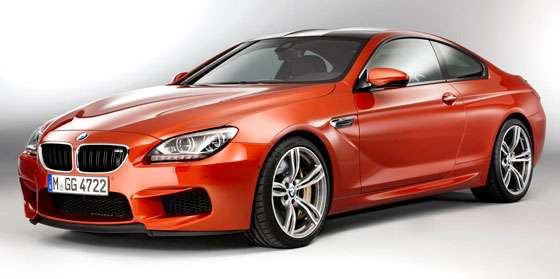
A principal novidade do M6 é o motor V8 4.4 biturbo, que desenvolve 560 CV de potência e 69 kgfm de torque, disponível das 1.500 às 5.750 RPM. O câmbio é de sete marchas com dupla embreagem, controle de largada e troca de marchas por borboletas atrás do volante.
Segundo a marca alemã, o novo modelo está "mais agressivo, mais esportivo, mais luxuoso e mais eficiente", porque ele chega a 100 km/h em apenas 4,2 segundos, gasta até 30% menos combustível e emite até 30% menos CO2. A suspensão é ajustável eletronicamente, através de um botão, e a função "M" faz alterações no controle eletrônico de estabilidade e no diferencial para uma condução mais esportiva. Outro item disponível no veículo é o BMW Active M Differential, um diferencial de deslizamento limitado com discos múltiplos, trabalhando em conjunto com o DSC e o novo Dynamic Damper Controls, que controla a força de amortecimento com um sistema eletro-hidráulico.
Os freios possuem discos de 39,9 cm de diâmetro nas rodas dianteiras e 39,6 cm nas traseiras, com pinças de seis pistões, pintadas com a cor azul escuro metálico, e têm o logo "M Motorsport" estampado. As rodas são de 19 polegadas, com pneus 265/40 nas rodas dianteiras e 295/35 nas traseiras. Como opcionais, estão disponíveis rodas de 20 polegadas.
Entre os equipamentos do habitáculo, um sistema de som da Bang & Olufsen, sistema de navegação GPS, acabamento de fibra de carbono, volante com aquecimento e assistente de detecção de pedestres. Ainda não foram divulgados os preços do M6 cupê nem do conversível, mas o lançamento está marcado para junho, no New York Auto Show, e o cupê deve ser apresentado no Salão de Geneva.
Introducing The All-New 3rd Generation BMW M6 Coupe and Convertible.
Woodcliff Lake, NJ –The iconic M6 returns from a two year hiatus more powerful, more athletic, more focused, more luxurious and more efficient than ever before. Since the "M6" badge was first placed on a BMW back in 1987, this iconic model has exemplified the luxury and daily usability of a top range BMW coupe combined with true super-car performance. Now, in its 3rd generation, the all-new BMW M6 will again be offered as a 4-seat Coupe and Convertible.
The new 2012 BMW M6 Convertible will be the first to arrive in US BMW Center showrooms in June 2012. The BMW M6 Coupe will arrive at US BMW Centers in the late Summer of 2012 as a 2013 model. US Pricing, technical specification, EPA mileage ratings, standard and optional equipment will be announced closer to the on-sale date.
Like its sedan brother the M5, the new M6 models are high-performance sports cars whose exceptional dynamic potential is geared squarely towards the demands of track use. At the same time, the M6 sets new benchmarks in daily driving comfort, innovative features and fuel efficiency.
In order to achieve these lofty performance goals, the new BMW M6 Coupe and Convertible share the most powerful engine ever fitted in a series-produced model from BMW M GmbH mated to a high-torque 7-speed M-Double Clutch Transmission (M-DCT). An innovative Active M Differential which optimizes power transfer between the rear wheels. This drivetrain, combined with extensive chassis and suspension upgrades ensure that the engine's performance can be transferred to the ground.
The engine: High-Revving V8 Engine with M TwinPower Turbo Technology.
The new engine shared by the BMW M5 and M6 has the highest output ever generated by a BMW M car, and at the same time provides the most efficient balance between performance and fuel consumption. It is characterized by immediate throttle response, a linear power band and an unusually high and flat torque curve. The new engine produces around 10% higher output than the V10 engine of its predecessors and torque is up by over 30%. At the same time, fuel consumption and CO2 are expected to be reduced by approximately 30%.
To achieve the performance levels demanded by the M6, the engineers at BMW M started with the proven BMW M developed V8 engine from the BMW X5 M - X6 M (internally known as the S63) and further developed it for its duty in the latest M5 and M6 models. Internally designated as the S63Tü this new engine uses similar M Twin Power technology combined with the reverse flow V8 layout. The result is that the high-revving V8 engine with M TwinPower Turbo Technology lends a whole new intensity to the powerful thrust at higher rev ranges for which M cars are known. The 4.4-liter engine develops a peak output of 560 hp (412 kW) at 5,750 – 7,000 rpm (versus 555 hp at 6,000 rpm for the S63), while its maximum torque of 500 lb-ft (680 Nm) is on tap between 1,500 and 5,750 rpm (versus 500 lb-ft from 1,500 to 5650 rpm for the S63). The rev limiter intervenes at 7,200 rpm (up 200 rpm from the S63 engine). The rev band, which offers extremely dynamic acceleration between peak torque and the availability of maximum output, is therefore almost three times as wide as that of the V10 engine in the previous generation M6.
As in the V-8 engine of the X5 M, the two twin-scroll turbochargers are placed (along with the catalytic converters) in the V-space between the two cylinder banks in a reverse flow layout. This layout results in an unusually compact engine where the intake is moved outboard and the exhaust inboard – the opposite of conventional V-engines. The lengths of intake and exhaust tracts are thereby reduced and their diameters increased, reducing pressure losses - especially on the exhaust side. A further advantage of the layout is the short distance between the cylinders' combustion chambers and the primary catalytic converters; this leads to quicker warm-up of the catalysts after the engine is started and therefore lower start-up emissions.
The patented cross-bank exhaust manifold, first introduced in the S63 engine of the X5 M is also employed in the S63Tü. This exhaust manifold is a special 8-into-4 setup that combines the exhaust from two cylinders (on opposite banks) that are 360˚ of crankshaft rotation apart from each other. Each of the eight runners is of identical length to ensure perfectly regular timing of exhaust gas pulses.
Each of the four manifold outlets is fed into each of the four available scrolls of the two twin-scroll turbochargers. The two scrolls of a twin-scroll turbo lead each exhaust pulse directly to the turbine without feedback or interference from the other scroll (that are fed by cylinders at other points in the combustion process). Additionally, dividing the gases into two smaller paths (scrolls) results in higher gas velocity than a single larger path. This enhances the turbocharger's response thereby reducing lag. The crossover manifold is configured so that the second scroll of the turbo is fed by two cylinders that are 180˚ out of phase with the first scroll. In this way each turbocharger receives distinct exhaust pulses every 180˚ of crankshaft rotation (from one of four cylinders). Furthermore, the two turbos receive exhaust pulses that are 90˚ offset from each other. The result is that throttle response is sharpened and turbo lag is reduced to a minimum. The new engine also sports larger intake runners, larger air to liquid intercoolers and a tuned exhaust which results in the engine making power more quickly than previously possible. Finally, the S63Tü uses a maximum boost pressure of 1.5 bar (21.7 psi) versus 1.2 bar (17.4 psi) for the S63 engine.
BMW's efficient High Precision direct fuel injection also plays a major role in this engine's combination of high performance and fuel efficiency. High Precision direct fuel injection ensures an extremely precise supply of fuel to the combustion chambers. Injectors positioned centrally between the valves within immediate range of the spark plugs spray the fuel into the combustion chambers with maximum pressure of 200 bar (nearly 3000 psi), providing smooth and clean combustion. Innovative solenoid valve injectors in the new BMW M6 engine use multiple injections per combustion cycle to achieve an extremely precise mixture preparation. The fuel also has a cooling effect on the combustion that allowed the M engineers to endow the engine with a high compression ratio of 10:1. This high compression ratio contributes to both performance and efficiency, while reducing exhaust emissions – and even has a positive effect on engine sound.
Throughout its history, the heart of the BMW M5 and M6 has been its high-revving, high output-per-liter engine fed by individual throttle plates. The new engine introduces VALVETRONIC variable valve control system to a BMW M engine – effectively providing 16 individual throttles.
VALVETRONIC is BMW's patented fully variable valve control system that eliminates the need for conventional throttles. Engine power is instead controlled directly by varying the amount of lift of the intake valves. Pumping losses are minimized with this system and resulting in efficiency and torque improvements. VALVETRONIC has also sharpened the responsiveness of this engine compared to the V10 engine it replaces.
The M TwinPower Technology of the new V8 engine also includes BMW's Double VANOS 1 infinitely-variable valve timing system which optimizes the engine's efficiency and generates high torque at low engine revs. In addition, a volume-controlled oil pump and a range of other EfficientDynamics measures deliver an extra boost to efficiency. The new BMW M6 features both Brake Energy Regeneration and the Auto Start-Stop function, which automatically switches off the engine when the car comes to a stop.
The engine's exhilarating thrust gives the new BMW M6 models impressive acceleration. The instant power delivery and sustained thrust of the engine results in an acceleration of 0– 62 mph (0-100 km/h) in 4.2 seconds for the Coupe and 4.3 seconds for the Convertible. The sprint from 0–124 mph (0-200 km/h) takes only 12.6 seconds for the Coupe and 13.1 for the Convertible. The top speed of both models is electronically limited to 155 mph (250 km/h). While the engine's output has increased by around 10% and maximum torque is up by more than 30%, the new BMW M6 models consume roughly 30% less fuel and have substantially higher range than their predecessors.
M TwinPower Turbo Technology also shapes the development of the V8 engine's soundtrack. The concept of crossover exhaust manifolds plays a key role in delivering a multi-layered collage of sound. The twin-tailpipe exhaust system of the new BMW M6 runs largely in a straight line and has a large cross section. The two exhaust pipes feed into a single muffler from which the customary M quad tailpipes extend out through the far left and right-hand sides of the rear diffuser.
7-speed M Double Clutch Transmission with Drivelogic
The new V8 engine M TwinPower Turbo engine is mated to a newly developed 7-speed double-clutch transmission designed to handle the high torque and high revving nature of the engine. The M DCT with Drivelogic System developed especially for the new M6 has been tuned to the performance characteristics of the engine. It delivers exceptionally fast and clean gear changes in both automatic mode (D) and manual mode (S). No clutch pedal is required for manual gearshifts and the driver can keep their foot on the accelerator during gear changes. The driver uses the model-specific M gear selector to choose between D and S mode and to engage reverse. Comfort is further enhanced by the new Low Speed Assistance function, which smoothes power delivery in stop-and-go traffic with a light touch of the accelerator pedal.
The transmission offers a sequential shift pattern for the manual gearshift mode. Alternatively, the driver can also change gears manually using the shift paddles on the newly developed M leather steering wheel, complete with multifunction buttons and gearshift paddles. In typical M configuration, the driver pulls the right-hand paddle to shift up and the left-hand paddle to shift down. The new M steering wheel stands out with its smaller rim diameter and a design that borrows from the double-spoke design of the M light-alloy wheels.
M DCT with Drivelogic offers three shift programs in both automatic and manual mode. The driver selects his/her desired mode using the rocker switch positioned immediately below the shift lever on the center console. The D1 program is selected automatically when the engine is started, tailoring gear selection to deliver the most efficient possible driving style. D2 mode supports laid-back cruising with gear changes carried out according to engine revs and load. And, to promote a sporty driving style laced with dynamic acceleration, shift times in D3 mode are set up to delay gear changes until the engine has climbed higher up the rev range.
Drivers can also adapt the shift characteristics to their requirements in Manual mode. S1 mode generates comfortable and smooth gear changes. In S2, the gear changes are completed noticeably faster and accompanied by significant shift kick at higher revs. S3 is the one to choose for maximum driving dynamics; it enables even sportier gear changes and is required to initiate the Launch Control function. When the stability control system is switched off, Launch Control allows the driver to achieve maximum acceleration from a standstill as permitted by conditions. During Launch Control acceleration, each gear shift takes place automatically and at the optimum engine speed.
Active M Differential.
The Active M Differential in the new M6 is an electronically controlled multi-plate limited-slip differential programmed to optimize traction, stability and sporting character.
The rear axle's multi-plate limited-slip differential works with high precision and speed. Its control unit is connected with the Dynamic Stability Control (DSC) system via FlexRay high-speed data transfer technology and constantly cross-checks the data collected by its sensors with the feedback from DSC. It then uses this information to calculate the locking force required to deliver optimum traction and stability. The data recorded by DSC sensors is also passed on if the stability control system is in MDM mode or is switched off. The locking force within the differential can be varied continuously between 0 and 100%. The ABS system retains full functionality in all situations.
In addition to the data provided by DSC, the Active M Differential's control unit also takes into account the position of the accelerator pedal, the rotational speed of the wheels and the car's yaw rate. Every driving situation is therefore analyzed so that any loss of traction on one side of the car is identified at an early stage. The degree of lock is adjusted as required within a fraction of a second, enabling wheel spin to be prevented on slippery surfaces, when the right and left rear wheel have widely differing friction coefficients and in tight corners. Optimizing traction in this way also provides unbeatable driving stability in challenging conditions and allows impressive acceleration out of corners. The Active M Differential can also unlock just as quickly to stabilize the car off-throttle.
M-Specific Chassis
Each component in the suspension and chassis of the new M6 has been developed based on the extensive race expertise of BMW M engineers. The integral rear axle subframe in the M6 is rigidly bolted to the body to maximize body rigidity and handling precision. Reinforced chassis mountings at the front and rear axles ensure that dynamic forces are passed through to the body structure. Specially tuned axle kinematics and newly developed forged aluminum suspension components boasting impressive strength and minimized weight meet both the requirements of everyday road driving and the specialized demands of track use. The result is that the BMW M6 continues the BMW M tradition of engineering a chassis that is "faster than the engine". As with every BMW M car, the engineers carried out the fine-tuning during extensive testing on the Nürburgring Nordschleife circuit.
Dynamic Damper Control (DDC) electronically controlled shock absorbers are standard on the new BMW M6. DDC uses electro-hydraulic damping force adjustment to provide a set-up suited to the driving situation and the wishes of the driver. The shock settings can be adjusted at the touch of a button. In "Comfort" mode, the dampers respond adaptively to the condition of the road surface and the driver's style. "Sport" mode activates a noticeably stiffer damper set-up, while "Sport Plus" allows further stiffening of the suspension to achieve maximum longitudinal and lateral acceleration in ultra-dynamic driving situations.
At the touch of a button, the driver can also select from three settings for the M-specific Servotronic speed-sensitive power steering. "Comfort" mode requires only a small amount of steering force when parking or maneuvering, but still provides the M brand's hallmark direction-changing precision at higher speeds. "Sport" ensures the driver enjoys more intensive feedback across all speed ranges. "Sports Plus" is the highest level of steering dynamics that can be selected where the driver is called on to use even greater force with the steering wheel.
The new BMW M6 also uses BMW's most advanced Dynamic Stability Control (DSC) and Anti-lock Braking System (ABS) that includes Cornering Brake Control (CBC), Dynamic Brake Control (DBC), Brake Assistant, brake fade compensation, a Brake Drying function and Start-off Assistant. The DSC system has three levels of operation. The default is "DSC On" which provides the greatest level of stability and traction control. M Dynamic Mode (MDM) can be activated to override the basic setting by pressing the DSC button on the center console. This mode allows for very spirited driving – as on a race track – while still providing a safety net, by raising the intervention thresholds of DSC. "DSC Off" mode can also be activated at the touch of a button for complete deactivation of the system.
High-Performance Brake System
The high-performance braking system of the new BMW M6 guarantees outstanding stopping power matching the overall performance of the car. The typical BMW M compound rotors have been further improved for the new M6. These rotors thermally separate the central hub (constructed of aluminum) and the vented/cross drilled cast iron rotors. As a result, the rotors are free to expand and contract without warping. The diameter of the brake rotors is 15.7 inches (400 mm) at the front and 15.6 inches (396 mm) at the rear. The six-piston fixed calipers are radially bolted to the pivot bearing and are painted dark blue metallic complete with the M logo. Together, the brake system has been tested to provide exceptional performance, fade resistance and pedal feel.
The new BMW M6 Coupe and Convertible will be the first cars in the history of BMW M to be offered with optional M Carbon-Ceramic brakes (in conjunction with 20-inch M light-alloy wheels as of July 2012 production). These new brakes are without parallel and take the cars stopping power to another new level – especially at the race track. The brake rotors measure 16.1 inches (410 mm) in diameter at the front and 15.6 inches (396 mm) at the rear. Made from a carbon-fiber ceramic compound, the rotors boast even greater resistance to heat combined with significantly reduced rotating masses. The M Carbon-Ceramic brakes are 42.8 lb (19.4 kg) lighter than the standard brakes, yet the innovative material also displays exceptional resistance to wear, and the operating life of the rotors is many times that of conventional equivalents. The optional M Carbon-Ceramic system also sees six-piston fixed radial calipers at the front teamed with single-piston floating calipers at the rear. The M Carbon-Ceramic system can be easily identified through the wheels by the special gold-colored calipers.
The standard M6 wheel and tire combination is a 19 inch M specific light alloy wheels fitted with 265/40 R19 ultra-high performance summer tires in the front and 295/35 R 19 tires at the rear. 20 inch forged M light-alloy wheels can be ordered as an option.
Design: athletic aura, powerfully taut surfaces, elegant lines.
Classical proportions, the sporty yet elegant lines of the BMW 6 Series and the familiar design language of BMW M Automobiles form the foundations for the body design of the BMW M6 Coupe and Convertible. Powerfully taut surfaces and precise contours underline the athletic aura of the two models. In addition, a model-specific interpretation of hallmark M styling cues includes design details which are influenced directly by technical considerations – such as the cooling air required, chassis geometry and aerodynamics – and therefore further highlight the cars' outstanding performance attributes.
Wide air intakes, stunningly contoured headlight units and large, smooth surfaces shape the front view of the new BMW M6 Coupe and Convertible. Another eye-catching element of the car's nose is its newly designed M kidney grille, which bears an "M6" badge – an homage to the first generation M6. The grille's black, paired kidney grille slats take their cues from the characteristic double-spoke design of the M light-alloy wheels. The 30 millimeter (1.2 inch) increase in track width over the two cars' respective 6 Series stablemates is complemented by powerfully flared front wheel arches, which sit flush with the wheels. This extra width offers a clear nod to the optimized roadholding of these high-performance sports cars. The three-dimensional shaping of their air intakes and race-inspired flaps designed to control airflow to the outer air intakes also underlines the cars' forward-surging, dynamic character.
An LED accent light cuts across the tops of the standard Adaptive Xenon Headlights. The bright white, three-dimensional LED corona rings are leveled off to striking effect at the top and lower edges. Adaptive LED Headlights are available as an option on both M6 models. The LED sources in these headlights are placed on a horizontal rib running through the center of the units and feed their light into the reflectors in front of them. This ensures that the distinctive appearance of the twin circular headlights comes across clearly in every situation. The turn signals – in the form of horizontally arranged LED units – are integrated into the headlight units below the light rings.
The familiar M athleticism of both models is also clearly visible from the side. The front fenders feature familiar M gills. Their three-dimensional shape, wide chrome frames and indicator bars – which bear the M logo – give them an extremely deep-set look. In tune with the wider wheel arches, the character lines around the gills are suitably prominent. Eye-catching creases on the model-specific side skirts sweep upwards, diverting the gaze to the rear wheels. The new BMW M6 Coupe and BMW M6 Convertible are fitted with standard 19-inch M light-alloy wheels. These forged wheels feature seven double-spokes in a two-tone finish. The optional 20-inch M light-alloy wheels, meanwhile, hint at reduced weight with their five slender double-spokes and allow a clear line of sight through to the powerful brake system.
The design of the rear hints at the stable roadholding and powerful poise of the new BMW M6 models by presenting a view that broadens towards the lower section and incorporates several horizontal lines. The reflectors, positioned immediately below the L-shaped rear lights, provide an individual expression of sportiness. However, the clearest pointer to the unmistakable identity of the two high-performance sports cars are the familiar M quad exhaust tailpipes positioned on either side of the diffuser integrated into the lower area of the rear fascia.
Dynamic contours, lightweight material: the Carbon Fiber Composite roof of the BMW M6 Coupe.
Like its predecessor, the roof of the new BMW M6 Coupe is molded from natural color Carbon Fiber Composite. The dark color of the roof gives the two-door car's silhouette a longer look, which is further emphasized by the dynamic longitudinal character lines unique to the M6 Coupe. The use of the lightweight material for the roof allows the car's center of gravity to be lowered, enhancing agility. The standard BMW Individual High-gloss Shadow Line trim surrounds the side windows (or the waistline in the case of the BMW M6 Convertible) and the base and lower section of the aerodynamically optimized M exterior mirror caps.
The elegant yet aggressive look of the BMW M6 Convertible is underlined by the flying buttress architecture of the high-quality soft-top roof. Projecting into the rear section, the buttresses accentuate the car's dynamically sweeping silhouette. The heated, vertical glass rear window, which is situated just behind the rear seats, retracts independently of the soft-top itself. The automatic opening and closing process for the roof can be activated both at a standstill and while on the move at speeds of up to 25 mph (40 km/h). The standard Comfort Access system allows the roof to be opened or closed by pressing the remote control button on the car key. It takes the roof 19 seconds to open and 24 seconds to close again.
Customers can chose from one non-metallic and eight metallic shades (including four exclusive M finishes) for the exterior paintwork of both models. The soft-top for the new BMW M6 Convertible is available in Black and Beige, or – as an option – in Anthracite Silver effect.
M-specific cockpit design: flawless car control, made-to-measure luxury.
The interior of the new BMW M6 brings together the incomparable combination of a driver-oriented cockpit design of a sports car, the spaciousness and luxurious feel of a premium automobile. Newly developed M sports seats, Merino extended leather upholstery, door sills with "M6" lettering, an M driver's footrest, exclusive carbon fiber interior trim and the BMW Individual roof liner in Anthracite are all standard equipment, as is the iDrive control system with a 10.2-inch Control Display. This screen is centrally positioned and like the controls in the central section of the instrument panel, slightly oriented towards the driver.
The new M Multifunction seats offer the driver and front passenger optimum lateral support while cornering, but also a high level of comfort over long distances. The lightweight seats with integrated belt system have an M-specific design headlined by extremely prominent cushion and backrest bolsters, head restraints integrated into the backrests, eye-catching stitching emphasizing the segments of the seats, and an M logo embossed into the shoulder area. The M Multifunction seats have electric height, fore/aft, side bolster and backrest angle adjustment, and also come with pneumatically adjustable lumbar support, a memory function and a manually adjustable thigh support. The M Multifunction seats are fitted with active head restraints to reduce the risk of injury in a rear-end impact.
The instrument cluster with black-panel-technology includes classic circular instruments in traditional BMW M car style, with red needles and white illumination, as well as model-specific displays and the M logo on the rev counter. The shift program currently selected and gear engaged are shown in the center of the instrument cluster. Feedback from all the drive and chassis settings selected at the touch a button are also displayed in the instrument cluster under the tachometer.
Sports Car Cockpit - Custom Tailored M Drive Buttons
On the left-hand steering wheel spoke, the driver has two M Drive buttons which can be used to call up a pre-configured setup for the car. For example, the driver can save a sporty configuration on the "M1" button and a track focused setup (with all driver aids shut off) on the "M2" button. The set-up selected will remain activated until it is either cancelled by pressing the button again or the driver switches to another M Drive setting. Once the system has been switched off – as when the engine is started – it reverts back to a default configuration focusing on efficiency and ride comfort.
The M Drive system in the new BMW M6 allows the driver to adjust no fewer than six parameters: the engine management, the response of the Servotronic steering system, the M DCT shift program, the DSC mode, the responses of DDC and the information in the Head-Up Display. The desired settings can be configured in any combination via the iDrive menu or by using the M Drive select buttons on the center console to set the configuration followed by pressing and holding one of the two M Drive buttons for a few seconds (until the configuration is stored). For safety reasons, a setup involving setting MDM mode or "DSC Off" requires confirmation from the driver – by pressing the M Drive button again – before it can be activated. The setup configuration selected is shown by a "M1" or "M2" symbol displayed in the instrument cluster.
M Head-Up Display.
The M Drive configuration also includes the information shown on the optional M Head-Up Display and projects important information onto the windshield directly in the driver's field of vision. A full spectrum of colors is used to display graphics and symbols and the all-color capability means road sign symbols can be reproduced very realistically. In addition to a digital speed read-out, the M-specific version of the Head-Up Display also shows the gear currently engaged and a color rev counter symbol, complete with Shift Lights.
Body Structure and Safety
The hallmark M handling and occupant protection both are made possible due to the extraordinary strength of the BMW M6 Coupe and Convertible body structures. Incredibly, durable load-bearing structures and precisely defined deformation zones keep the forces released in a collision away from the extremely stiff passenger compartment. The new BMW M6 models include front and side airbags, three-point inertial reel seat belts on all seats, front belt force limiters, seat belt tensioners, and ISOFIX child seat attachments in the rear all as standard equipment. The M6 Coupe also has side curtain head airbags for both rows of seats while the M6 Convertible is equipped with roll-over protection. Positioned behind the rear head restraints, these high-strength aluminum roll bars extend automatically in a fraction of a second should there be a danger of the car rolling over.
The BMW M6 weight is minimized by an intelligent mix of materials containing a high proportion of high-tensile and ultra-high tensile steel, as well as aluminum. The hood and doors of the new BMW M6 models are made of aluminum. The front fenders on both models are molded from thermoplastic. The Coupe has the unique Carbon Fiber Composite roof panel described earlier. In addition, the trunk lids and – in the case of the BMW M6 Convertible – also the roof compartment cover, are made from the glass fiber composite material SMC (Sheet Molding Compound). With a power-to-weight ratio of 7.3lb/hp for the Coupe and 7.7lb/hp for the Convertible, both models represent a substantial step forward from their predecessors.
The new 2012 BMW M6 Convertible will be the first to reach US BMW Center showrooms in June 2012. The BMW M6 Coupe will arrive at US BMW Centers in the late Summer of 2012 as a 2013 model. US Pricing, technical specification, EPA mileage ratings, standard and optional equipment will be announced closer to the on-sale date.
Publicado: quinta-feira, 16 de fevereiro de 2012 às 21:30
Permalink:
Copiar
Link copiado para a área de transferência!
Houve um erro ao copiar o link para a área de transferência.
Assinar:
Postagens (Atom)


